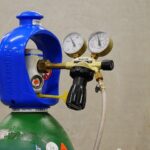The legal compliance and safety standards have to be strong and to ensure that a notification has been issued by the Directorate of Industrial Safety and Health, Gujarat.
It includes some strict qualifications for today’s safety auditors in Gujarat. Also, this notification has stated a clear audit procedure for companies, that shall improve their accountability and transparency. Here, we will discuss who needs to follow this new Notification and how factories can implement it effectively to ensure proper Safety Audit, in Gujarat.
1. Background and Legal Importance
Proper safety standards in industrial environments have already been established through The Factories Act of 1948. In Gujarat, DISH is the main regulatory body that leverages this authority. It falls under Sections of 41 and 112 of the Act.
2. Who Needs to Comply?
The rules of this DISH notification are applicable to three unique categories of factories. Those include:
- Category I: Factories that are working with Major Accident Hazard installations. Hazardous chemical handling procedures require following all the regulations with utmost care.
- Category II: This includes the factories that have to operate hazardous procedures. Also, those factories that must handle hazardous chemicals of more than 100 kg or litres. However, the amount remains below some specific threshold limits.
- Category III: Other types of factories that are working with more than 100 employees on a day.
3. Types and Frequencies of Audit
A. Internal Audits
Require to conduct the internal audit annuallythrough internal well aware staff or may appoint consultant for the same. A register needs to be maintained to include the Non-Compliances (NC) identified during the audit and the action taken.
B. External Audits
Require to be conducted by External DISH-authorized safety auditors.
Follow the intervals as below:
- Category I: Every 2 years.
- Category II: Every 3 years.
- Category III: Every 4 years.
C . Timeline for Initial Submission
- Internal Audit: Within 6 months of the commencement of the rules.
- External Audit: Within 1 year of the commencement of the rules.
D . Qualifications and Recognitions of Auditor
DISH mandates certain criteria for auditors. Those help to maintain workplace integrity. Some of those are:
- Engineering Degree: The auditor must have a degree in Mechanical, Chemical, or Electrical engineering. Also, they must have 5 or more years of experience in either manufacturing, maintenance, design, project or safety department in a factory Or Sc. degree in Chemistry or Physics, along with more than 7 years of experience. And in either case, must poses Diploma in Industrial Safety recognized by Government recognized board or Institution.
- The person has to be not more than 62 years.
- Recognition Validity: The DISH approval shall be of 2 years and must be renew at least 3 months before expiry.
- Conflict of Interest: They must not have any indirect or direct interest in audited factories. Must not be partner, director, manager or indirectly related to company or partner, manager or director of company of relative of the owner, must not be employee of the company, nor can be a supplier of the company.
- Auditor must maintain logbook and should be submitted to chief factory inspector as and when required by officers of Chief Inspector.
E . Procedures and Standards of Audit
All your workplace audits need to align with the Standard Code of Practice of India regarding Occupational Health and Safety Audit. Also, all those must carefully follow the latest norms of safety.
Timeline of Report Submission
- Factory occupier: You have to submit your audit report, along with the Action Taken Report to the Chief Inspector within just 30 days.
- Hazards: If you see any critical hazard, your auditor needs to inform both the Chief Inspector and the occupier. This will help them to perform urgent corrective actions.
- New Audits: A fresh or new audit will be needed if you make changes in the storage of hazardous chemicals or manufacturing procedures.
F . Reporting Compliance and Obligations
- Standardized Formats: For all audit reports and ATRs, a few standardized format templates are offered. Those can easily ensure clarify and uniformity. Those are:
- Hazard Escalation: You need to convey immediate threats without any delay to the occupier and also the Chief Inspector.
- Submission Hierarchy: Follow the following method of hierarchy:
G . Enforcement and Penalties
Heavy penalties will be charged if the rules of external or internal audits are not followed. Those are the legal actions under the above-mentioned Factories Act.
Auditors who violates rules or even create conflicts of interest may face revocation of their recognitions permanently.
All those factories that fails to follow audit recommendations, will face serious consequence, including operational restrictions, financial penalties, or even complete shutdowns.
H . Safety Auditors
They must submit quarterly audit statements. Also, they have to strictly maintain correct logbooks, along with upholding confidentiality.
They must ensure proper eligibility and even submit their applications in time.
They must report all incidents of audit results as well as critical hazards on time.
Adhering to these complete a safety audit which helps in future business plans.
ADVISORY – An organisation before appointing an External Safety auditor, must also ask for the latest valid DISH – letter / Certificate of recognition.




